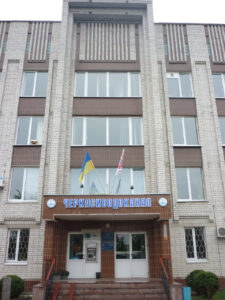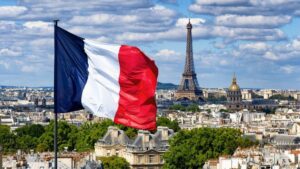
The Netherlands will contribute EUR65m to Ukraine’s Energy Support Fund, the Energy Ministry said after a meeting between Deputy Minister Roman Andarak and Dutch government special representative Erika Scholten.
“This is a significant support for us and it will be an important contribution to the repair campaign that is already underway in preparation for the next heating season. Thanks to these funds, we will be able to partially cover the immediate needs,” Andarak noted.
In her turn, the Dutch representative emphasized that the energy sector would remain one of the main priorities for her country in providing further support to Ukraine.
The parties also discussed the needs of the Ukrainian fuel and energy sector in equipment for the gas production sector, which has recently been subjected to regular Russian attacks. The parties agreed to study in detail the possibilities of cooperation in this area.
According to the Ministry of Energy, since the beginning of the full-scale Russian invasion, Ukraine has received from the Netherlands 211 cargoes of energy equipment weighing almost 3,000 tons, including transformers, generators, a mobile gas power station, cables, fittings for overhead lines and other equipment needed for repair and restoration work.
As reported with reference to Energy Minister German Galushchenko, now the deficit of the Ukrainian Energy Support Fund in applications submitted by Ukrainian energy companies is almost $500m.
The Energy Support Fund was established in April 2022 on the initiative of Energy Minister Herman Galushchenko and Energy Commissioner Kadri Simson.
As of the beginning of March 2025, the announced contributions of partners to the Fund exceeded EUR1 billion. Among its donors are public and private sectors from more than 30 countries, international and regional organizations.

Communal enterprise “Cherkassyvodokanal” of Cherkassy city council on March 20 announced a tender for services of compulsory insurance of civil liability of owners of motor vehicles (OSAGO).
As reported in the system of electronic public procurement Prozorro, the expected cost -446,707 thousand UAH.
Documents are accepted until March 28.

In 2024, the French residential real estate market went through a period of adjustment and stabilization after the previous price increases. According to the National Institute for Statistics and Economic Research (INSEE), in the third quarter of 2024, secondary housing prices fell by 3.96% year-on-year, the fifth consecutive quarter of decline.
Key trends in 2024:
Declining prices: In the Ile-de-France region, including Paris, secondary housing prices fell by 5.24% year-on-year, reaching €6,150 per square meter. In Paris itself, the decline was 5.56%, with an average price of €9,520 per square meter.
Decrease in investment activity: Investments in rental property declined significantly due to rising interest rates and tightening credit conditions.
Shortage of rental housing: There was an acute shortage of affordable rental housing in major cities, especially in Paris, which made it difficult for students and young professionals to find accommodation.
Forecast for 2025:
Experts expect the French residential real estate market to continue to stabilize in 2025. The National Real Estate Federation of France (FNAIM) predicts that prices will stabilize in the first half of 2025, and in the second half of the year, growth of 1% year-on-year will begin.
However, the market recovery will depend on lower mortgage rates and improved financing conditions, which will increase purchasing power. Geopolitical events and domestic housing policy will also play an important role.
Thus, 2024 was a watershed year for the French real estate market, marked by significant price adjustments, but also by the first signs of stabilization. Industry professionals expect a gradual recovery, which will depend on macroeconomic factors and government policy.
http://relocation.com.ua/rynok-zhytlovoi-nerukhomosti-frantsii-u-2024/

Insurance company “Knyazha Life Vienne Insurance Group” (Kiev) last year collected UAH 60.890 million of insurance payments, which is 5.39% less than in the previous year, reports RA “Standard-Rating” on the website in the information on confirmation of the financial stability rating/credit rating of the company at the level of “uaAA+” at the end of the reporting period.
It is noted that the volume of insurance payments and indemnities made by the company for 2024 amounts to UAH 27,383 mln, that is by 20,29% less than the volume of payments for 2023. Thus, the level of payments of the insurer has decreased by 8,41 percentage points (p.p.), to 44,97%.
Last year the company’s activity was profitable: it received UAH 29,561 mln of net profit
Assets as of January 1, 2025 increased by 14.01%, to UAH 909.017 mln, equity capital – by 11.40%, to UAH 306.321 mln, liabilities increased by 15.38%, to UAH 602.696 mln, cash and cash equivalents – by 71.57%, to UAH 4.296 mln, government bonds and deposits in banks as part of current financial investments – by 13.92%, to UAH 879.676 mln.
RA emphasizes that as of the beginning of 2025 shareholders’ equity covered 50,83% of the insurer’s liabilities, and 0,71% of its liabilities were secured by cash and cash equivalents.
At the same time, as of January 1, 2025 the insurer has formed a portfolio of current financial investments in the amount of UAH 879,676 mln, including bank deposits and investments in government bonds. Thus, as of the beginning of 2025, liquid assets (cash and cash equivalents, bank deposits and government bonds) exceeded the company’s liabilities in 1,47 times.
It is noted that the high level of external support of the company is provided by its shareholder – an international insurance group headquartered in Austria Vienna Insurance Group Wiener Städtische Versicherung AG., which is represented by 50 companies in 30 countries and is the leader of the insurance market in Central and Eastern Europe.